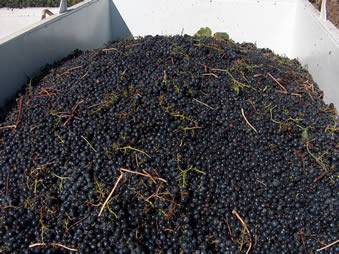
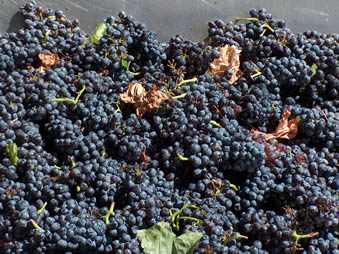
Machine harvested Merlot (left) and hand-picked Pinot Noir (right)


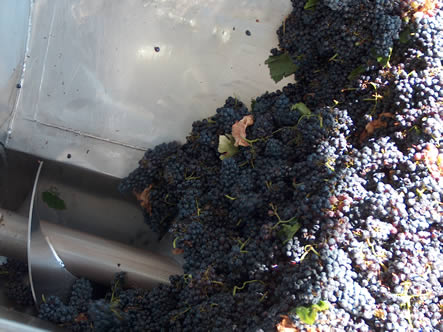
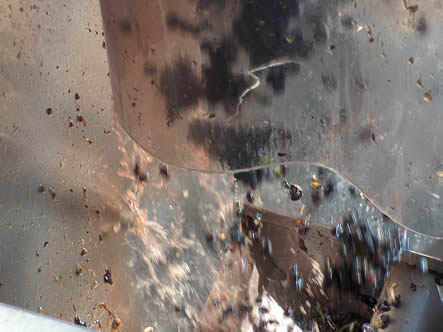
|
|
Left
alone, the skins would form a solid cap on the top of the juice. Bacteria would
begin to ferment at the cap–air interface, and the result would be a volatile
acidity problem—the wine would reek of vinegar, and be spoiled. Winemakers avoid
this by keeping the cap moist, either by plunging it regularly, or keeping it
submerged by a mechanical device, or by pumping juice over it.
|
|
|
|
|
Three types of fermenter. On the left we have a lagar (this is a swanky one with a heat exchanger), ideal for shallow fermentation with good contact between the juice and skins. Traditionally, these are foot-trodden, and this one hails from Portugal's Douro. Below we have a row of open-top fermenters, which are quite small and ideal for processing high-quality red wines (again, this is from a winery in Portugal, this time the Alentejo). Then below left there is a rotary fermenter of the type popular in Australia. |
|
|
|
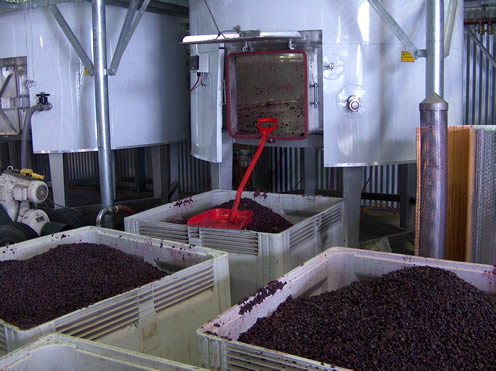
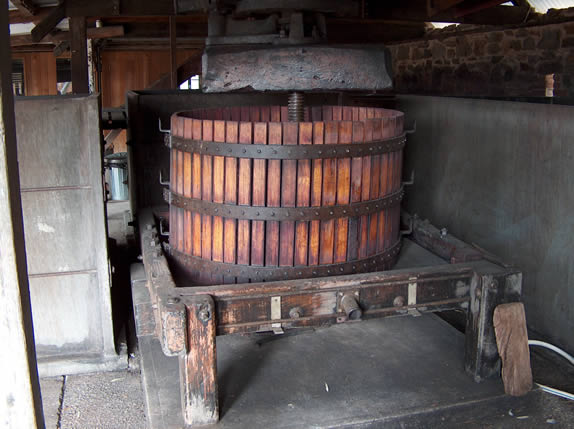
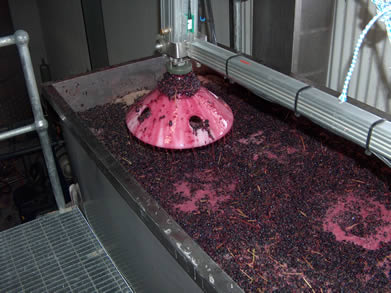 Why is the subject of tannins an important one for the wine
trade at large, and not just winemakers and anoraks? I can think of two reasons.
First, I suspect that whatever your involvement in the trade, you’ll be familiar
with the term ‘tannin’ and it’s a word that you’ll have used frequently,
perhaps, may I humbly suggest, without a clear idea of what you are referring
to. Second, it’s a field of active current research, and data that are only now
just accumulating are pointing towards a very different understanding of the
role of tannins in red wines than that traditionally espoused by wine textbooks.
In this feature I’ll present a brief overview of the subject and then look at
the new picture that is emerging from recent research. As with many wine science
topics, there’s a lot still to be learned, so much of this piece will
concentrate on framing the key questions that still need answering. You’ll be
relieved to hear that I’m going to try to focus on concepts and ideas, rather
than spend too long on chemical structures and formulae.
Why is the subject of tannins an important one for the wine
trade at large, and not just winemakers and anoraks? I can think of two reasons.
First, I suspect that whatever your involvement in the trade, you’ll be familiar
with the term ‘tannin’ and it’s a word that you’ll have used frequently,
perhaps, may I humbly suggest, without a clear idea of what you are referring
to. Second, it’s a field of active current research, and data that are only now
just accumulating are pointing towards a very different understanding of the
role of tannins in red wines than that traditionally espoused by wine textbooks.
In this feature I’ll present a brief overview of the subject and then look at
the new picture that is emerging from recent research. As with many wine science
topics, there’s a lot still to be learned, so much of this piece will
concentrate on framing the key questions that still need answering. You’ll be
relieved to hear that I’m going to try to focus on concepts and ideas, rather
than spend too long on chemical structures and formulae.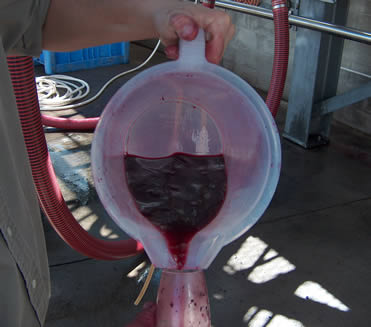 While tannins exist in grapes, what we are actually interested
in is the tannins that are found in wine. There’s a difference. Wine tannins
come from grape skins, stems and seeds, and their extraction is heavily
dependent on the particular winemaking process involved. Some tannins also come
from barrels, particularly new ones, where these are used to age wine. The
complicating factor here is that the chemical make-up of the tannins is actually
changed during the winemaking process. Not only does the chain length change,
but the different chemical entities that stick to the sticky bits of the
phenolic subunits also changes. According to Dr Paul Smith, a chemist at the
Australian Wine Research Institute (AWRI) who’s working on tannins, ‘Wine
tannins constitute “evolved” grape tannins plus some grape tannins in the same
chemical state as they were in the grape.’ Dr Leigh Francis, also of the AWRI,
expands on this: ‘Wine tannins are considered more complex than grape tannins
due to the various chemical reactions that occur during winemaking and storage’.
While tannins exist in grapes, what we are actually interested
in is the tannins that are found in wine. There’s a difference. Wine tannins
come from grape skins, stems and seeds, and their extraction is heavily
dependent on the particular winemaking process involved. Some tannins also come
from barrels, particularly new ones, where these are used to age wine. The
complicating factor here is that the chemical make-up of the tannins is actually
changed during the winemaking process. Not only does the chain length change,
but the different chemical entities that stick to the sticky bits of the
phenolic subunits also changes. According to Dr Paul Smith, a chemist at the
Australian Wine Research Institute (AWRI) who’s working on tannins, ‘Wine
tannins constitute “evolved” grape tannins plus some grape tannins in the same
chemical state as they were in the grape.’ Dr Leigh Francis, also of the AWRI,
expands on this: ‘Wine tannins are considered more complex than grape tannins
due to the various chemical reactions that occur during winemaking and storage’.